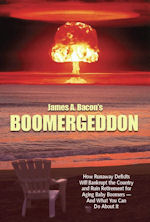About Bacon’s Rebellion
Bacon's Rebellion is Virginia's leading independent portal for news, opinions and analysis about state, regional and local public policy. Read more about us here.
Living the High-Line Life
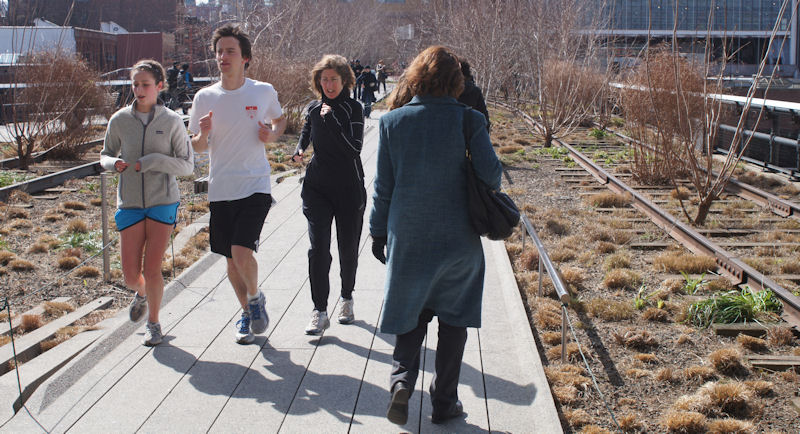
Converting an eyesore into a celebrated park, New York City's High Line showed how smart urbanism can create wealth.
by James A. Bacon
It was cold and blustery in New York City last week but the weather did not dissuade thousands of Gothamites and tourists from taking a walk along the High Line. The park, which snakes between, under and through apartments and office buildings on an old, elevated railroad bed, is popular year-round.
In mid-March the summer-lush gardens were dormant, with only a few blossoms budding. Still, the long, winding trail provided incredible views of Manhattan and the Hudson River. Every twist in the path offered new visual treats.
The seats and chairs were mostly empty -- it was far too cold for sitting -- but hundreds of people were jogging, strolling, gawking and even walking their dogs.
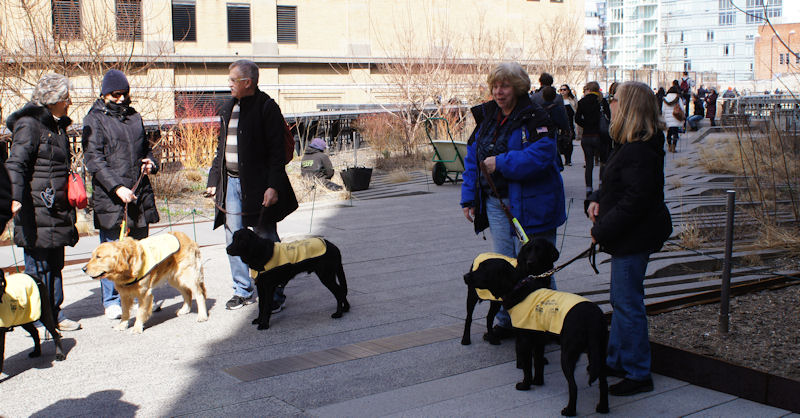
Built in the 1930s, the freight line had been raised thirty feet off the ground to remove dangerous trains from the streets of what then was New York's largest industrial district. By the 1990s, the manufacturing operations along Manhattan's west side had disappeared, the trains had stopped running, and the freight line was regarded as an eyesore. As New Yorkers debated what to do with the line -- demolish it, convert it to mass transit -- a remarkable thing happened: Nature took over. A disorderly profusion of plants colonized the track. Then the idea took root to preserve the rail line as a two-mile ribbon of green.
Today, New York City owns the High Line and the non-profit Friends of the High Line maintain it. The park is widely regarded as one of the most successful examples of urban reclamation in the United States and has served as an inspiration to civic enthusiasts around the country.
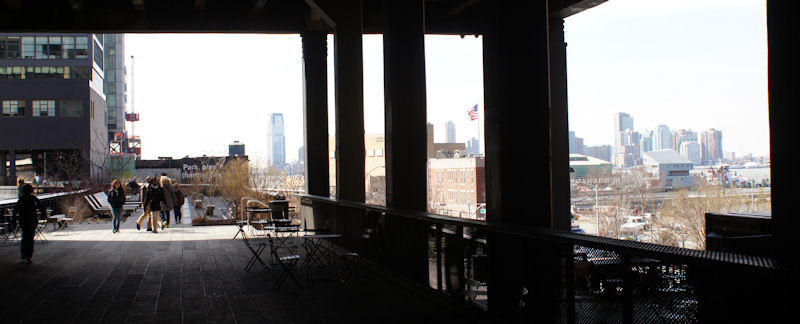
In my home town of Richmond, for instance, there is a concerted effort to build an elevated "urban oasis" over the James River. Although I'm a bit squeamish about the price tag, I think the BridgePark is one of those big ideas that can make an iconic statement and transform the city's image. Also, I'm increasingly convinced that one of the few viable strategies for regions and communities to dig themselves out of the fiscal sink-hole they find themselves in is to pay more attention to "place making," which creates economic value rather than destroying it as so much of our post-World War II development has done. The High Line shows how making places where people love to spend time can create economic value.
The urban fabric along the High Line is undergoing a transformation. There are several major construction projects underway along the route, and even buildings that aren't undergoing major renovations are adapting themselves to the park's existence. I don't know the stories behind these initiatives but I can point to them as examples of the positive dynamic that the park has engendered.
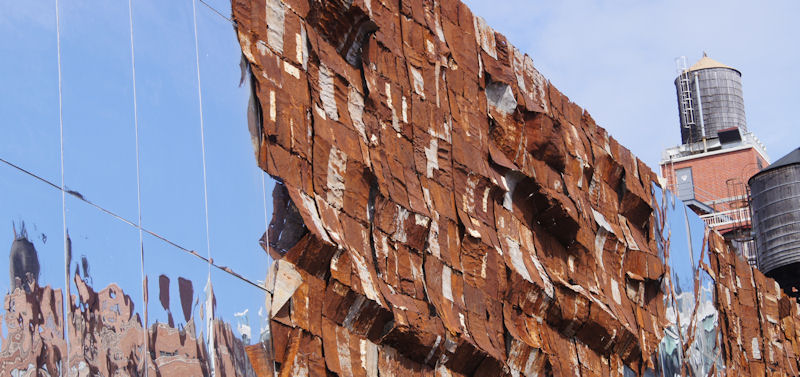
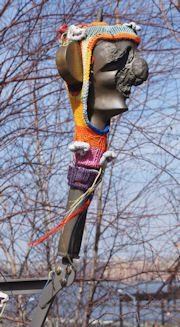 As seen in the photo above, someone applied a rough-textured material to the glass windows of an adjacent building to create an arresting visual effect. I suppose you might call it art. Whatever term you use, the material injects an element of the unpredictable. So did the odd piece of metal-and-wool craftsmanship to the right. The object (I don't know what else to call it) is not exactly art for the ages, but it is whimsical and fun. I expect that we'll see a lot more creations like these, as artists and philanthropists donate more pieces.
As seen in the photo above, someone applied a rough-textured material to the glass windows of an adjacent building to create an arresting visual effect. I suppose you might call it art. Whatever term you use, the material injects an element of the unpredictable. So did the odd piece of metal-and-wool craftsmanship to the right. The object (I don't know what else to call it) is not exactly art for the ages, but it is whimsical and fun. I expect that we'll see a lot more creations like these, as artists and philanthropists donate more pieces.
The Friends of the High Line organization also puts on guided tours, star-gazing sessions, dance parties, art events and food festivals during warmer months, creating a magnet for activity that draws people from far and wide. Where people like to congregate, they also like to live. Where people like to live, property values rise -- and so do tax revenues.
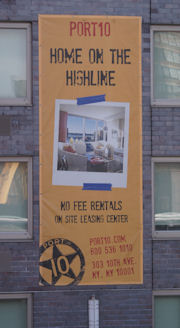 In a sure sign that the High Line is creating economic value, property owners have begun touting proximity to the park as a selling point for renters. "Home on the High Line!" proclaims the banner to the right, displayed to joggers and pedestrians on the elevated path. Property owners also are promoting a High Line location for business offices. "High Line Your Business," exhorts signage overlooking the urban trail, morphing the name of the park into a verb.
In a sure sign that the High Line is creating economic value, property owners have begun touting proximity to the park as a selling point for renters. "Home on the High Line!" proclaims the banner to the right, displayed to joggers and pedestrians on the elevated path. Property owners also are promoting a High Line location for business offices. "High Line Your Business," exhorts signage overlooking the urban trail, morphing the name of the park into a verb.
Academic studies have shown that parks increase the value of nearby property by 10% or more. Obviously, some parks have a greater positive impact than others. Those that become dead zones, inviting only vagrants and petty criminals, can hurt property values. But parks like the High Line that are capable of luring visitors even on cold, windy days, enhance property values and create wealth.
The two phases of the High Line completed so far cost a reported $152 million, $44 million of which came from private donations. That means city and state taxpayers contributed a net $108 million. In time, taxpayers potentially will generate a handsome return on that investment. As rents rise, so do property values and assessments. The price of apartments in one building along the High Line had doubled, reported the New York Times in June 2011. Developers also had begun renovating old buildings and erecting new high-rises -- $2 billion worth at that time. All told, the High Line has created literally billions of dollars of increased real estate value.
It's hard to say how that increased property tax valuation converts into tax revenue: New York City's property tax system is abstruse, the impact of rent-control is difficult to gauge and it is unclear how much the Bloomberg administration has relinquished in tax breaks to stimulate that $2 billion in private investment. For purposes of illustration, let us assume that every $1 million in increased property value generates $20,000 in annual tax revenue for the city. Private funds cover 90% of the park operations and the city has the transportation and utility infrastructure already in place, so much of that revenue should be gravy.
Let's also assume the High Line has bolstered property values along the viaduct by $3 billion through new investment and higher rents. That means the city should see a gain of $60 million in revenue yearly with very little offsetting increase in cost. On a $108 million net investment, that implies a two-year payback. Even if you adopt more conservative assumptions, the return on investment is phenomenal.
The High Line shows what real-estate wealth creation can do for a city. And the back-of-the-envelope analysis outlined here is something that every Virginia jurisdiction -- indeed, every municipality across the United States -- should undertake when it ponders making public investments. The easy money has run out. To build more prosperous, livable and fiscally sustainable communities, we must make every dollar count.
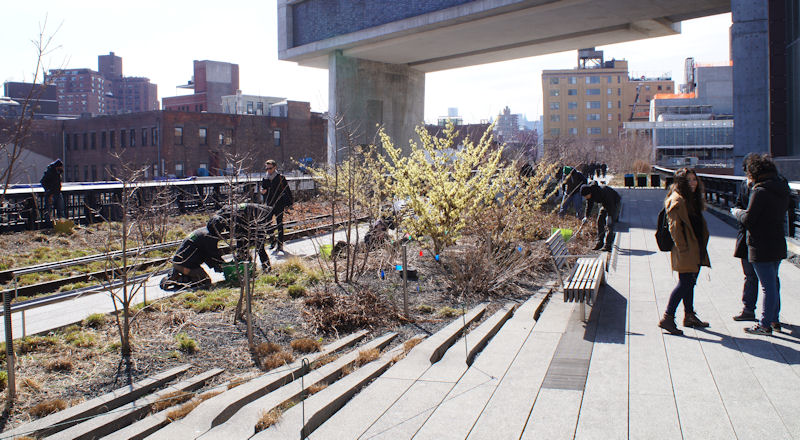
This article was made possible by a sponsorship by Bon Secours of Virginia Health System.

